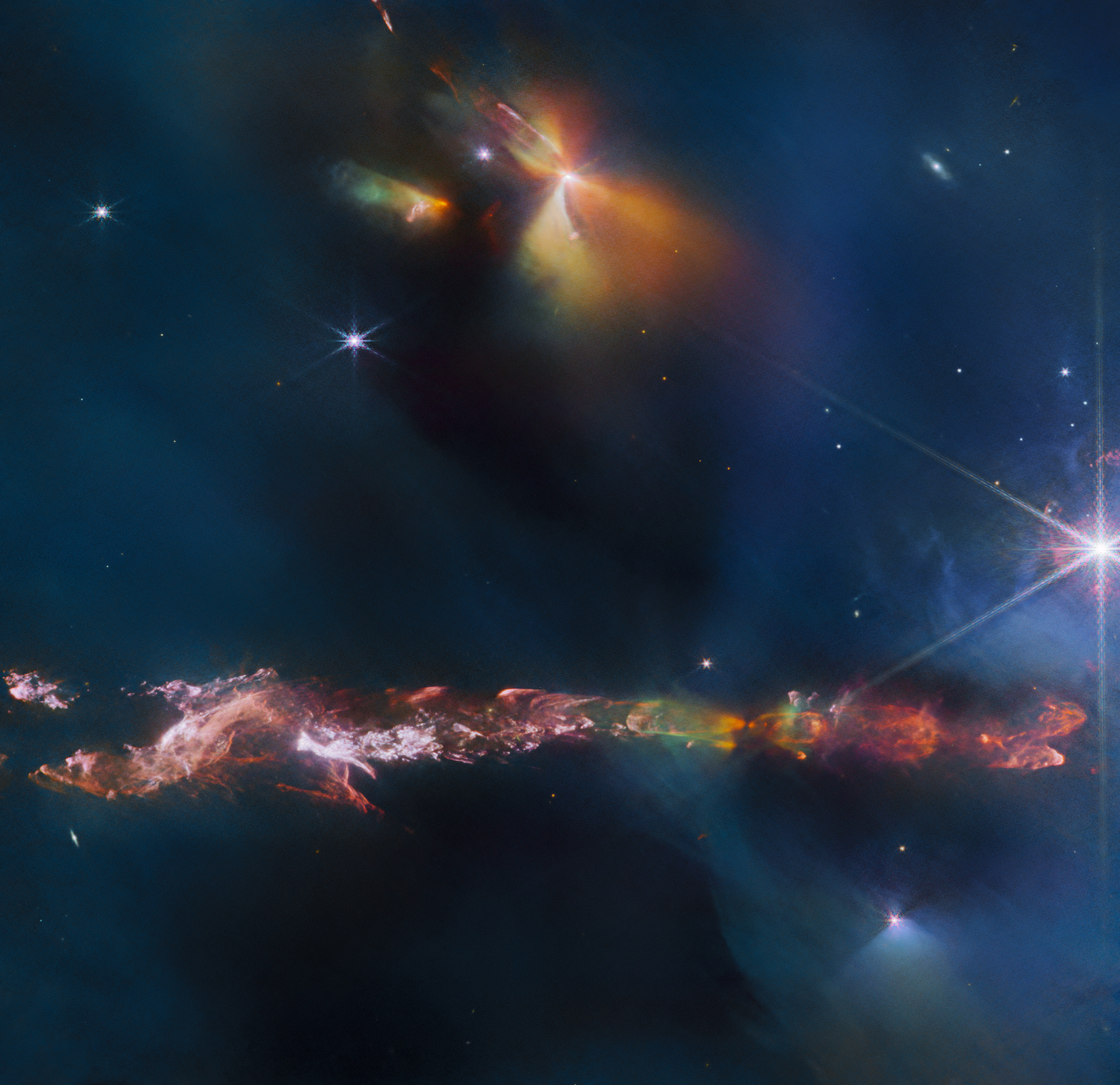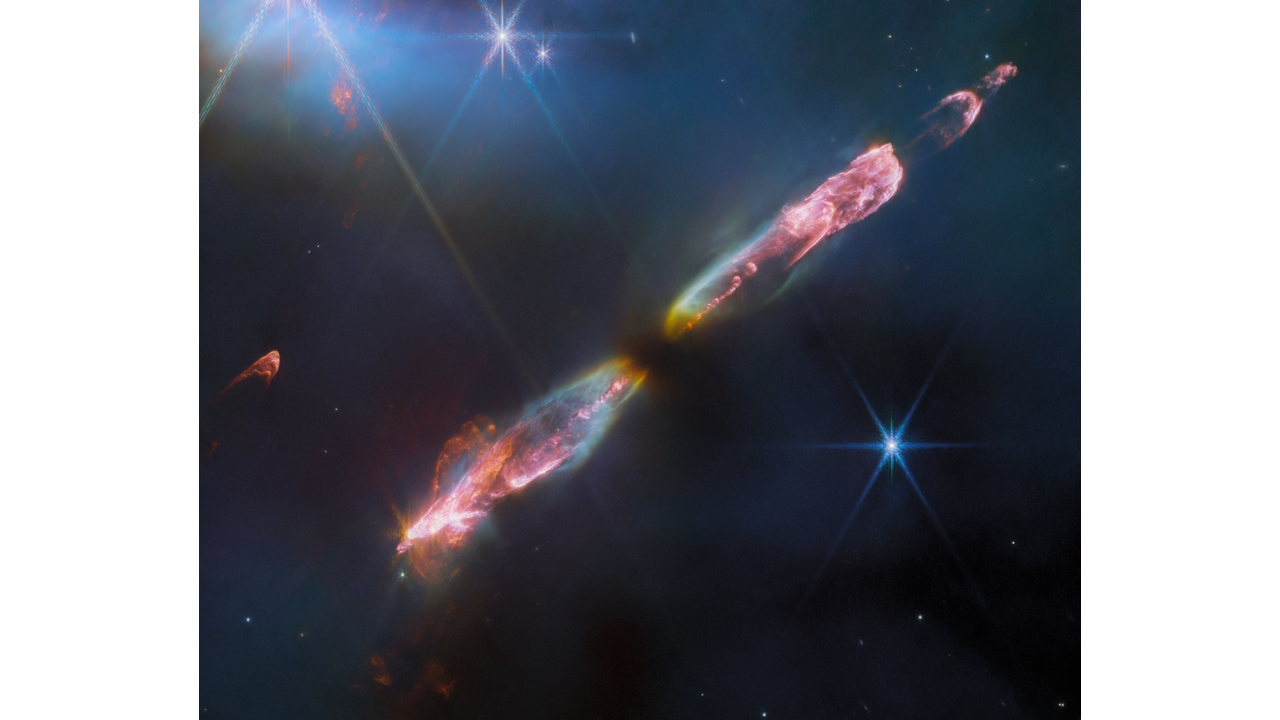James Webb Telescope reveals stunning newborn star in luminous gas cloud
JWST scientists make yet another revolutionary discovery in deep space about Herbig Haro objects produced by newborn stars

In yet another jaw-dropping discovery, the James Webb Space Telescope (JWST) has just unveiled a mesmerizing image of a luminous dust and gas cloud billowing from a newborn star. It showcases the intricate details of a celestial phenomenon associated with the birth of stars known as Herbig-Haro objects which come into existence when stellar winds or jets of gas from these nascent stars collide with nearby gas and dust at high speeds, generating shockwaves.
Since the launch of the JWST in December 2021 we have been continually blessed by mind-blowing images of a fiery space hourglass to out-of-this-world photos of distant spiral galaxies. The newly released image captured by Webb's Near-InfraRed Camera (NIRCam), highlights the dominance of Herbig Haro object 797 (HH 797) in the lower half, situated near the young open star cluster IC 348.
• Fancy yourself as an astronomer? Check out the best telescopes for astrophotography and browse a range to suit all budgets!
This stellar cocoon is found around 1,000 light years away on the eastern edge of the Perseus dark cloud complex - a constellation containing thousands of galaxies making it one of the biggest objects in the known universe. In the top section of the image, you can see bright infrared objects believed to host two additional protostars.
Infrared imaging is a powerful tool for studying newborn stars and their outflows, as it can penetrate the gas and dust clouds that surround them. The infrared emission of the star's outflows allows scientists to observe Herbig-Haro objects with precision using Webb's sensitive infrared instruments. Webb excels at capturing the infrared light emitted by molecules, including molecular hydrogen and carbon monoxide, excited by turbulent conditions, providing a visual representation of the outflows' structure.
Ground-based observations had previously indicated that HH 797's cold molecular gas exhibited a distinctive distribution, with red-shifted gas moving away to the south (bottom right) and blue-shifted gas moving toward the north (bottom left). Researchers had also noted a velocity gradient across the outflow, suggesting rotation. However, the newly released higher-resolution image from the JWST unveils a surprising revelation.
HH 797 is composed of two nearly parallel outflows, each associated with a separate star in the small dark region at the bottom right of the center. This revelation explains the previously observed velocity asymmetries and transforms the understanding of the object from a single to a double-star system, with each star producing its own dramatic outflow.
Get the Digital Camera World Newsletter
The best camera deals, reviews, product advice, and unmissable photography news, direct to your inbox!

Astronomers have also identified other outflows in the image, including one originating from the protostar in the top right of the center along with its illuminated cavity walls. HH 797's proximity to HH 211, approximately 30 arcseconds to the south, adds another layer of complexity to the cosmic narrative. HH 211 had been the focus of a previous Webb image released in September 2023.
This stunning new image from the JWST not only unveils the intricate details of HH 797 but also challenges previous assumptions. It enables astronomers to develop a better understanding of the complex dynamics of star formation in our universe and ultimately, how our solar system came to be.
Also check out the best cameras for astrophotography - some of which are specifically designed for shooting the night sky

Having studied Journalism and Public Relations at the University of the West of England Hannah developed a love for photography through a module on photojournalism. She specializes in Portrait, Fashion and lifestyle photography but has more recently branched out in the world of stylized product photography. Hannah spent three years working at Wex Photo Video as a Senior Sales Assistant, using her experience and knowledge of cameras to help people buy the equipment that is right for them. With eight years experience working with studio lighting, Hannah has run many successful workshops teaching people how to use different lighting setups.
